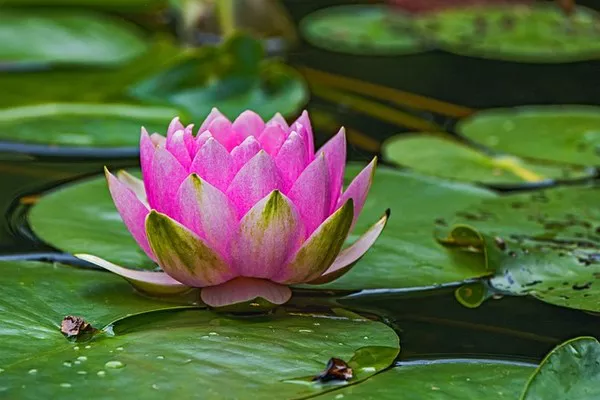Flowers, throughout history, have held a special place in human culture. Beyond their aesthetic appeal, flowers have been imbued with symbolism and meaning, ranging from expressions of love to representations of sorrow. Among the multitude of blooms, certain flowers have gained reputations for bringing luck and good fortune to those who encounter them. In this article, we delve into the realm of lucky flowers, exploring their cultural significance, historical context, and the fascinating stories that surround them.
The Power of Floral Symbolism
Flowers have long been associated with various meanings and symbolism across different cultures. From ancient civilizations to modern societies, people have ascribed significance to different types of flowers based on their appearance, scent, and cultural context. The language of flowers, also known as floriography, emerged during the Victorian era as a means of communication through the arrangement of blooms.
In this rich tapestry of floral symbolism, certain flowers have come to be regarded as symbols of luck and good fortune. Whether through folklore, religious beliefs, or historical events, these blooms have captured the imagination of people around the world, inspiring rituals, traditions, and superstitions.
Cherry Blossoms: Harbingers of Fortune
In Japanese culture, few flowers evoke as much reverence and awe as the cherry blossom, known as “sakura.” These delicate pink and white blooms hold profound cultural significance, symbolizing the transient nature of life and the beauty of fleeting moments. Each spring, millions of people gather in parks and gardens across Japan to partake in “hanami,” the tradition of enjoying the cherry blossoms in full bloom.
Beyond its aesthetic appeal, the cherry blossom is considered a harbinger of good fortune in Japanese folklore. It is believed that encountering cherry blossoms during the springtime can bring luck and prosperity for the rest of the year. This belief has deep roots in Japanese history, with references to the auspicious nature of cherry blossoms dating back centuries.
Four-leaf Clovers: Tokens of Luck
In Western cultures, the four-leaf clover has long been synonymous with good luck. Unlike its more common three-leaf counterpart, the four-leaf clover is rare, occurring only once in every several thousand clover plants. Its scarcity has contributed to its association with luck and fortune, as finding one is considered a fortunate and serendipitous event.
The origins of the four-leaf clover’s lucky reputation can be traced back to ancient Celtic traditions, where it was believed to offer protection against evil spirits. Over time, the four-leaf clover became a symbol of luck and prosperity, finding its way into various cultural practices and superstitions. Today, it remains a popular motif in jewelry, art, and decorative items, serving as a reminder of the enduring allure of luck and fortune.
Lotus Flowers: Symbols of Spiritual Enlightenment
In many Eastern cultures, the lotus flower holds profound spiritual significance, representing purity, enlightenment, and rebirth. Found throughout Asia in ponds, lakes, and rivers, the lotus rises above the murky waters to bloom in pristine beauty, symbolizing the journey from darkness to light.
In Hinduism and Buddhism, the lotus is closely associated with divine deities and enlightened beings. Its ability to emerge unscathed from muddy waters has led to its portrayal as a metaphor for spiritual growth and transcendence. In addition to its symbolic importance, the lotus is also revered for its medicinal properties and nutritional value, further enhancing its status as a symbol of luck and well-being.
Sunflowers: Beams of Positivity
With their vibrant yellow petals and towering stalks, sunflowers are often seen as symbols of optimism, happiness, and vitality. Native to the Americas, these cheerful blooms have captivated the hearts of people around the world, inspiring artists, poets, and gardeners alike.
In folklore, sunflowers have been associated with various positive qualities, including good luck, abundance, and longevity. Their tendency to track the sun’s movement across the sky, a phenomenon known as heliotropism, has led to interpretations of sunflowers as symbols of resilience and adaptability. Whether adorning floral arrangements or standing tall in sun-drenched fields, sunflowers continue to spread joy and positivity wherever they grow.
Roses: Tokens of Love and Luck
No discussion of lucky flowers would be complete without mentioning the rose, often hailed as the queen of flowers for its timeless beauty and universal appeal. Throughout history, roses have been revered for their intoxicating fragrance and exquisite blooms, making them a popular choice for special occasions and celebrations.
In addition to their associations with love and romance, roses have also been linked to luck and good fortune. In Greek and Roman mythology, the rose was sacred to the goddess Aphrodite (Venus), who was believed to bring love and prosperity to those who revered her. In medieval Europe, roses were used in herbal remedies and potions, believed to possess mystical powers of protection and healing.
Conclusion
In the vast tapestry of human culture, flowers have played a central role in conveying emotions, beliefs, and aspirations. From the cherry blossoms of Japan to the lotus flowers of Asia, each bloom carries with it a rich tapestry of symbolism and meaning, reflecting the diverse cultural heritage of humanity.
While the concept of luck may remain elusive and subjective, the belief in lucky flowers serves as a testament to our enduring fascination with the mysteries of the natural world. Whether through ancient folklore, religious traditions, or personal superstitions, these blooms continue to inspire wonder and reverence, reminding us of the beauty and resilience that surround us each day. So, the next time you encounter a flower in bloom, take a moment to appreciate its beauty and consider the possibility that it may just bring a touch of luck into your life.


